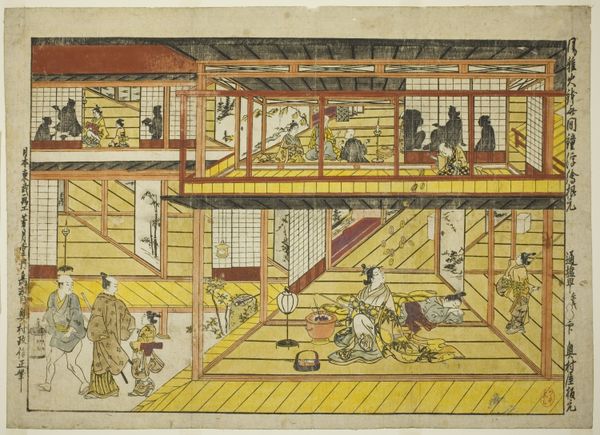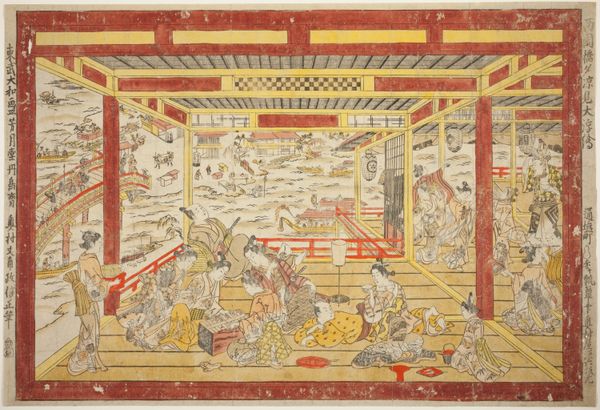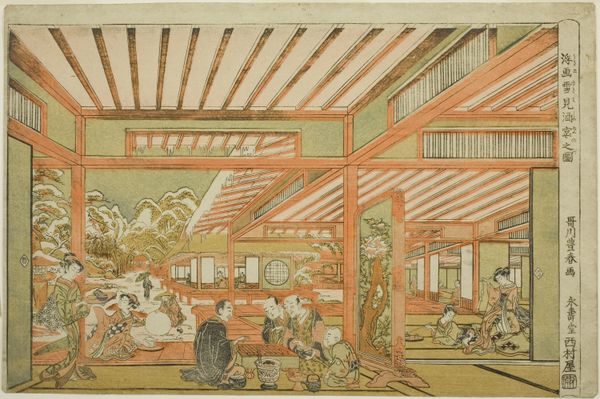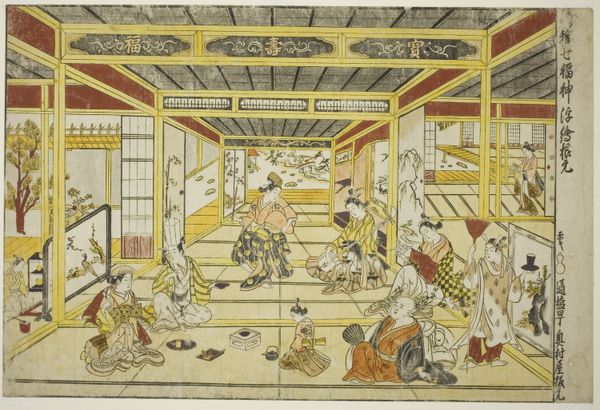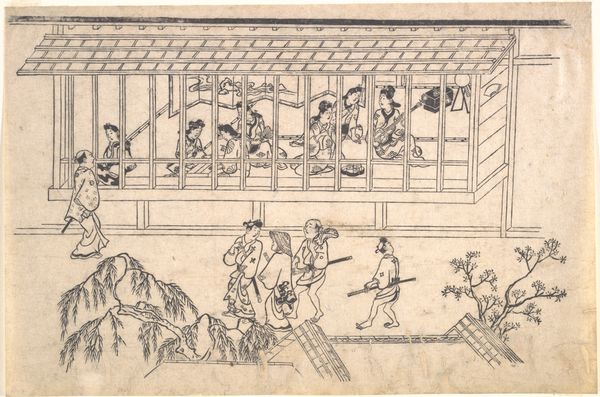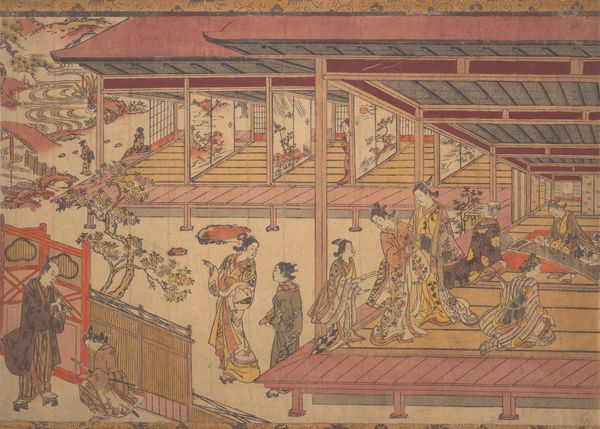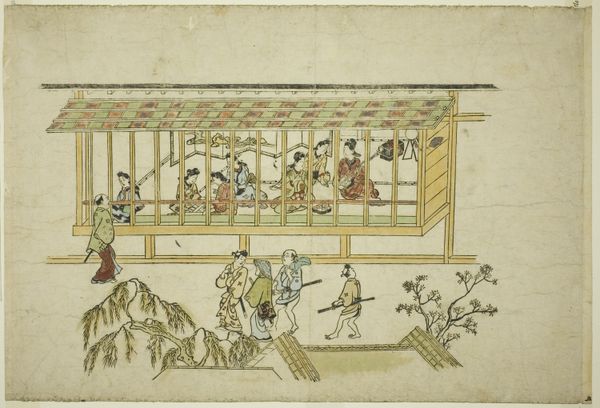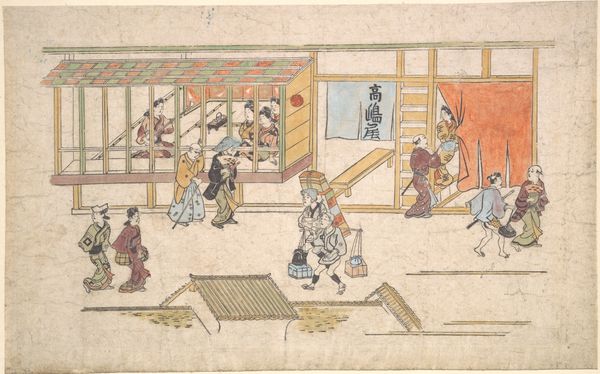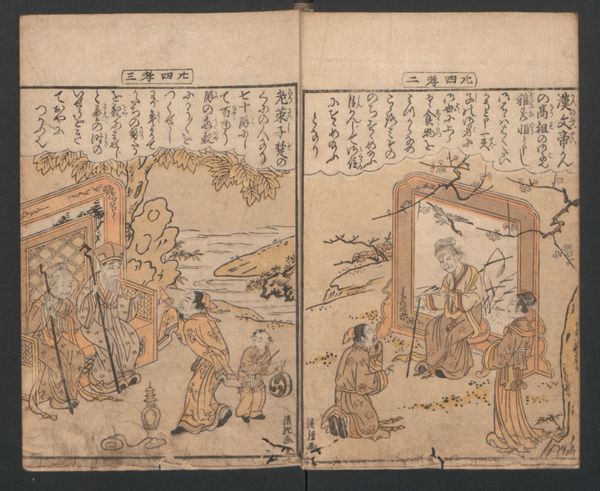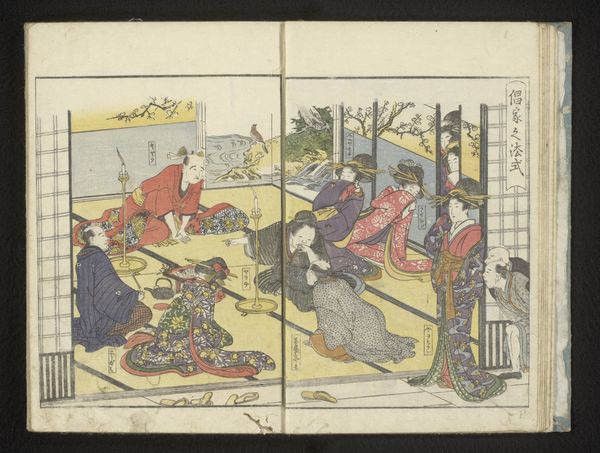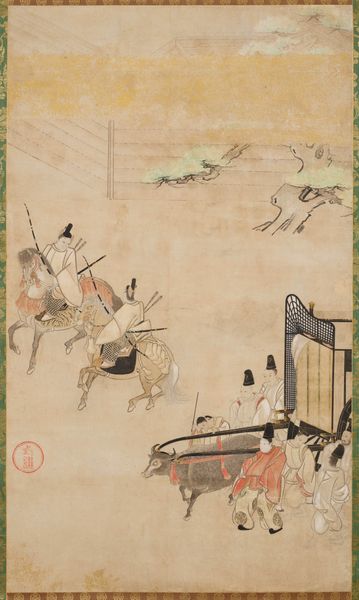
Gathering Shellfish at Low Tide at Shinagawa (Shinagawa shiohigari no zu) c. 1740s
0:00
0:00
# print
#
asian-art
#
landscape
#
ukiyo-e
#
japan
#
genre-painting
Dimensions: 31.1 × 46.1 cm
Copyright: Public Domain
Editor: So this is "Gathering Shellfish at Low Tide at Shinagawa," a print by Furuyama Moromasa, dating back to the 1740s. There's so much going on! I'm really struck by how the composition balances the intimate interior spaces with the expansive coastal scene. What symbolic elements do you notice here? Curator: Indeed, it’s fascinating how Moromasa weaves together the indoor and outdoor worlds, isn’t it? Note the presence of Mount Fuji, veiled in the distance. Even when partially obscured, it's immediately recognizable to the intended audience as a symbol of stability and permanence. This anchoring presence gives shape to the everyday activity taking place in the foreground: these people are connected to the land. Editor: That’s so interesting, I wouldn’t have known that about Mount Fuji, thank you. So, how does understanding that inform our reading of the genre scene, all of these figures actively digging for clams? Curator: It reframes our understanding of leisure. On one hand, we see carefree play indoors. But, even this apparently carefree clam-digging reflects a deep connection to the landscape; one recognizes themselves as part of the social order, within both cultural practices and within their role in relationship to their location and the stability of the country. It also references cycles of time: the low tide brings bounty, and the figures enact their expected roles. Consider how this contrasts with modern ideas of leisure. Editor: I’d never thought about how seemingly mundane imagery reinforces broader cultural values. That's really given me a lot to think about. Curator: Precisely! These prints weren't merely decorative; they actively shaped and reinforced societal norms through readily understood visual symbols.
Comments
No comments
Be the first to comment and join the conversation on the ultimate creative platform.
